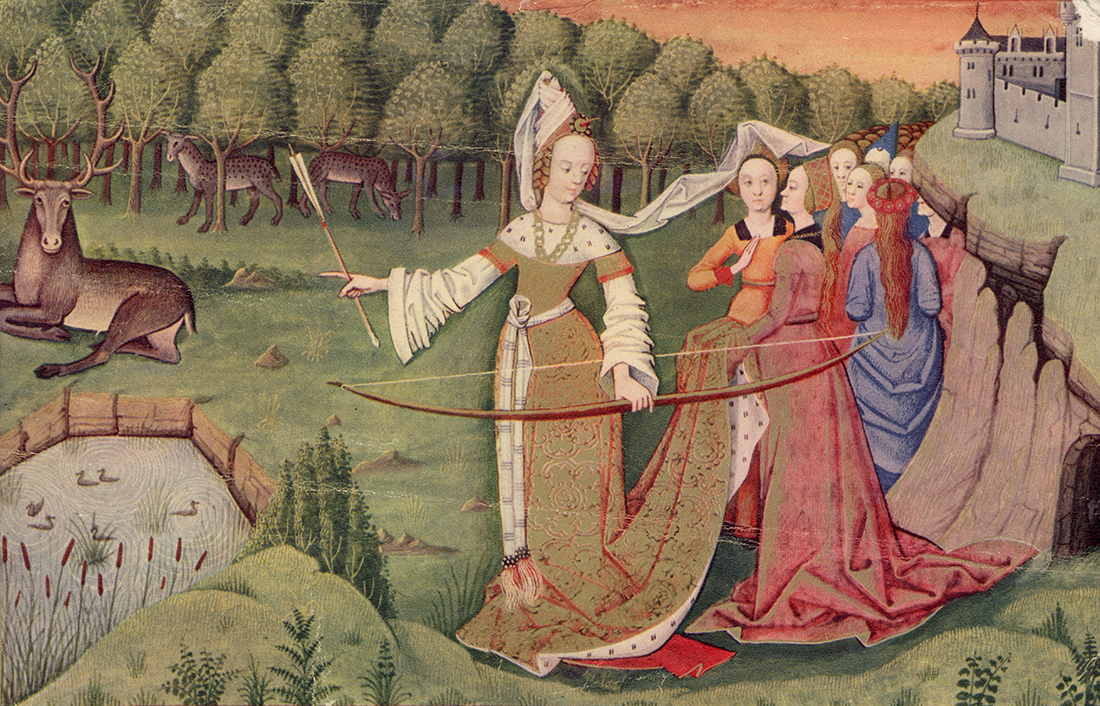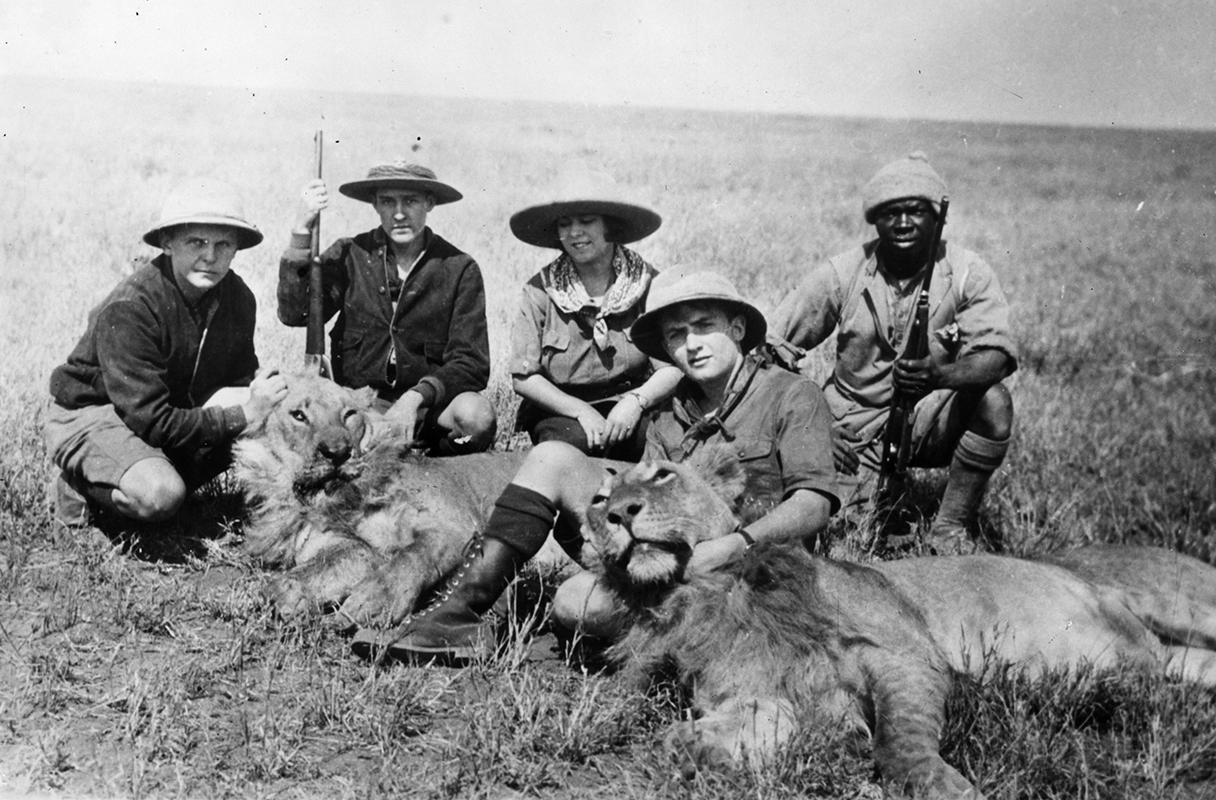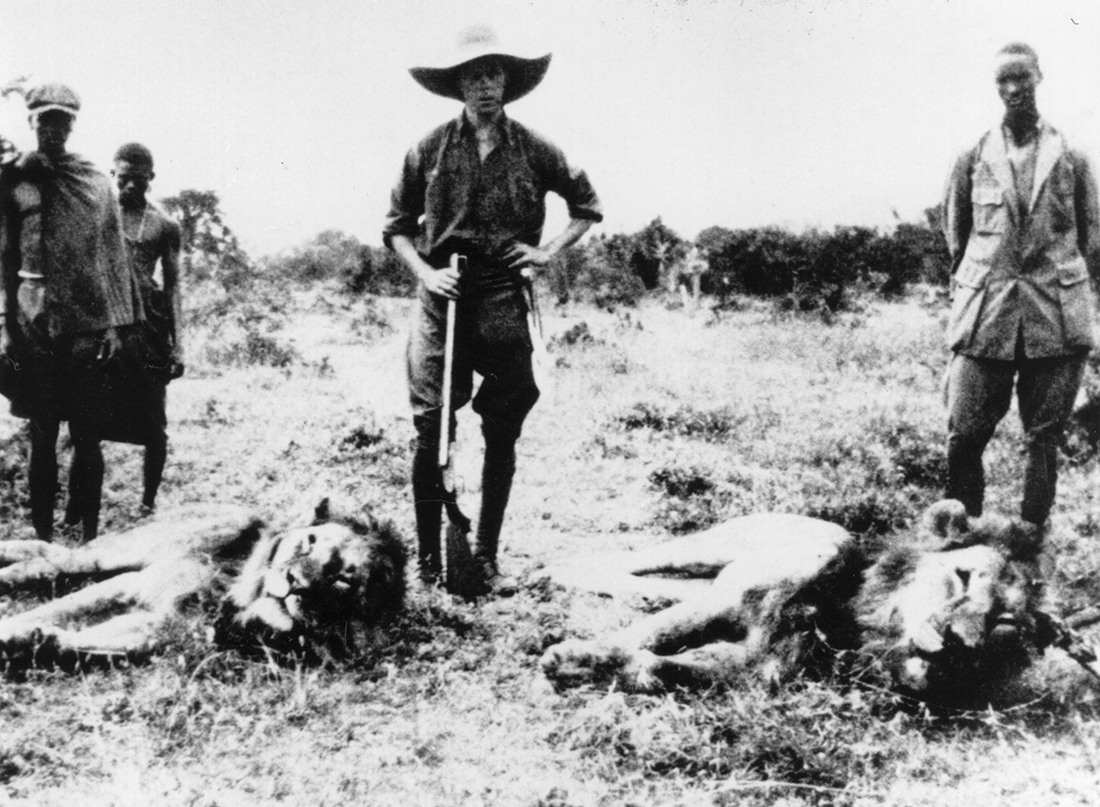Hunting Big Game: Why People Kill Animals for Fun

"The big beast stood like an uncouth statue, his hide black in the sunlight; he seemed what he was, a monster surviving over from the world's past, from the days when the beasts of the prime ran riot in their strength, before man grew so cunning of brain and hand as to master them."
Theodore Roosevelt, former U.S. president and renowned big-game hunter, waxed poetic about a massive bull rhinoceros in his 1910 book, "African Game Trails: An Account of the African Wanderings of an American Hunter-Naturalist," after glimpsing the rhino during a safari in British East Africa and the Belgian Congo earlier that year. [In Photos: A Museum Honors Teddy Roosevelt]
What happened next? Roosevelt shot the beast.
He fired with his gun's right barrel, "the bullet going through both lungs," and then with the left, "the bullet entering between the neck and shoulder and piercing his heart," Roosevelt wrote. A third volley from another member of the hunting party brought down the great animal, "just thirteen paces from where we stood," according to Roosevelt.
A black-and-white image of the aftermath shows Roosevelt in what was a common pose for him: standing alongside the lifeless body of a creature that he had hunted and killed. [In Photos: Endangered and Threatened Wildlife]
More than 100 years later, thousands of people each year still visit wild spaces across Africa with guns in hand. They apply for permits to recreationally hunt big animals, many of which — leopards, lions and elephants, to name just a few — represent threatened or endangered species.
And the "sport" is not without risks for human hunters — on May 19, a hunter in Zimbabwe was crushed to death by an elephant after the animal was shot by another member of his hunting party. So what motivates people to hunt these animals for pleasure, and to proudly display the bodies or body parts of their prey as precious trophies?
Get the world’s most fascinating discoveries delivered straight to your inbox.
Power play
The slaughtering of large, dangerous animals as a spectacle dates back thousands of years, with records from the Assyrian empire (about 4,000 years ago to around 600 B.C.) describing kings that boasted of killing elephants, ibex, ostriches, wild bulls and lions, according to a study published in 2008 in the journal Bulletin of the American Schools of Oriental Research.
These hunts were carefully orchestrated and conducted for the amusement of royalty and as demonstrations of their strength, Linda Kalof, a professor of sociology at Michigan State University, told Live Science in an email.
"Ancient canned hunts were spectacular displays of royal power and dominance, and always took place with the king's public watching from the sidelines," Kalof said. "A successful hunt requires the death of unrestrained wild animals — animals who are hostile, shun or attack humans, and are not submissive to human authority."
Even today, acquiring trophy animals is a way of displaying power, Kalof noted. In some African countries, where big-game hunting and trophy display are expensive forms of entertainment practiced predominantly by white men, hunting recalls ideologies that are deeply rooted in colonialism and patriarchy, Kalof said.
The high cost of hunting
And then there's the money involved. Legal hunting, which is conducted under the supervision of government agencies and official guides, involves expensive permits and is limited to specific animal populations and only in certain areas. Illegal poaching, on the other hand, circumvents all regulations and targets animals regardless of their age, sex, or endangered status.
The price tag attached to legal big-game hunting is considerable, once you tally up the costs of travel and lodging expenses, state-of-the-art equipment, local guides, and hunting permits. Government-sanctioned hunting is a booming enterprise in some African countries, with visiting hunters spending an estimated $200 million annually, The New York Times reported in 2015.
And when American dentist Walter Palmer notoriously shot a 13-year-old lion named Cecil in Zimbabwe in July 2015, he purportedly spent approximately $54,000 just on permits for the privilege.
In other words, people who hunt recreationally — and share photos of their trophies — are broadcasting that they can support lavish habits, biologist Chris Darimont, a Hakai-Raincoast Professor in the Department of Geography at the University of Victoria in British Columbia, told Live Science in an email.
In a study on contemporary trophy hunting behavior, published in March 2016 in the journal Biology Letters, Darimont and his co-authors investigated whether evolutionary anthropology could provide answers about motives for recreational hunting. They suggested in their findings that men use hunting to send signals about their fitness to rivals and potential mates, noting that even subsistence hunters (those who kill animals for food) targeted animals that were more challenging for them to catch, simply to let others know that they could afford to take that risk.
"The inference is that they have the physical and mental characteristics that allow them to behave in a costly way and absorb those costs," Darimont said.
And by sharing images of their trophies on social media, hunters can now trumpet messages about their personal wealth and social status to a global audience, he added. [Black Market Horns: Images from a Rhino Bust]
Funding conservation
But there's yet another side to the recreational hunting story: Some hunters argue that the money spent on their hobby is funding important conservation work. When hunters pay thousands of dollars to government agencies for the privilege of hunting certain types of wildlife in designated zones, portions of those costs can be invested in federal programs and community efforts to preserve animals living in protected areas – and even safeguard them against poaching, according to the World Wide Fund for Nature (WWF).
"In certain limited and rigorously controlled cases, including for threatened species, scientific evidence has shown that trophy hunting can be an effective conservation tool as part of a broad mix of strategies," the WWF states on its website.
Because legal hunting provides local jobs and revenue, it can work as a deterrent against poaching and helps to conserve ecosystems, professional hunter Nathan Askew, owner of an American company that leads hunting safaris for "dangerous game" in South Africa, Tanzania, Botswana and Mozambique, explained in a Facebook post.
"The positive economic impact brought about by hunting incentivizes governments, landowners and companies to protect the animals and their habitats," Askew said.
By demonstrating that wildlife has economic value, hunting can actively engage local communities in efforts to stop poachers and preserve wild spaces that might not otherwise be maintained for wildlife, a representative of the hunting organization Safari Club International (SCI), told Live Science in an email.
Hunting under government supervision can also preserve the health of animal populations in the wild by weeding out individuals that are less fit. In Namibia, for example, black rhinos are listed as critically endangered, with only 5,000 individuals remaining in the wild. Yet the Namibian government maintains an annual hunting quota of five post-breeding males, to stimulate population growth by allowing younger males to breed, the SCI representative explained. [A Crash of Rhinos: See All 5 Species]
"Not only does the black rhino hunting benefit rhino population growth, it also generates hundreds of thousands of dollars in revenue that by law has to be put toward rhino conservation in Namibia. Therefore, hunting provides a direct cash benefit to rhino conservation that tourism can’t provide," the representative said in a statement.
Conservation questions
However, recent studies suggest that modern hunters may be overestimating their contributions to wildlife conservation. Not all countries that support recreational hunting are transparent about where that income goes, and it can be uncertain how much — if any — is actually benefiting African communities or conservation efforts.
A report that the Democratic staff of the House Committee on Natural Resources (a congressional committee of the U.S. House of Representatives) issued in June 2016 suggested that income from hunting in African countries such as Zimbabwe, Tanzania, South Africa and Namibia, from which the greatest number of hunting trophies are imported into the U.S., was not meeting conservation needs.
"In assessing the flow of trophy hunting revenue to conservation efforts, we found many troubling examples of funds either being diverted from their purpose or not being dedicated to conservation in the first place," the report's authors wrote.
Other experts have also questioned hunting's usefullness as a tool for conservation. In fact, when it comes to lions, "trophy hunting adds to the problem," Jeff Flocken, North American director for the International Fund for Animal Welfare, wrote in August 2013, in an opinion column for National Geographic.
Flocken argued that trophy hunting weakens the African lion gene pool because the most desirable trophy kills are young, healthy males. Removing them from the population means that their DNA won't contribute to the next generation of lions. Killing young males also destabilizes their prides, and can result in more lion casualties as rival males compete to take their place, he wrote.
But perhaps most importantly, he added, legalized recreational hunting derails conservation efforts by simply devaluing the lives of the hunted animals.
"It's a message that won't be heard as long as it is common and legal to kill lions for sport," Flocken said in the article. "Why should anyone spend money to protect an animal that a wealthy American can then pay to go kill?"
Original article on Live Science.

Mindy Weisberger is a science journalist and author of "Rise of the Zombie Bugs: The Surprising Science of Parasitic Mind-Control" (Hopkins Press). She formerly edited for Scholastic and was a channel editor and senior writer for Live Science. She has reported on general science, covering climate change, paleontology, biology and space. Mindy studied film at Columbia University; prior to LS, she produced, wrote and directed media for the American Museum of Natural History in NYC. Her videos about dinosaurs, astrophysics, biodiversity and evolution appear in museums and science centers worldwide, earning awards such as the CINE Golden Eagle and the Communicator Award of Excellence. Her writing has also appeared in Scientific American, The Washington Post, How It Works Magazine and CNN.






